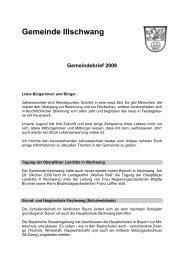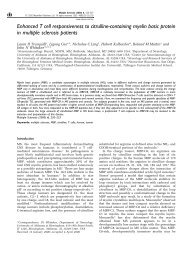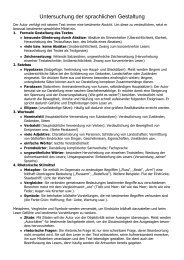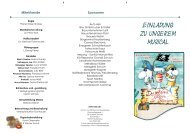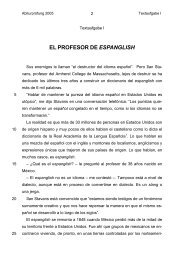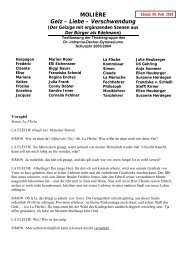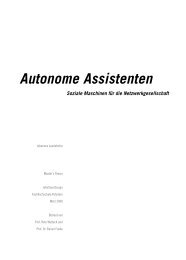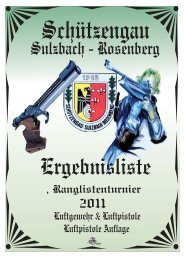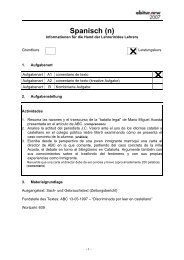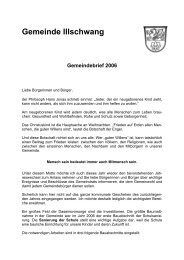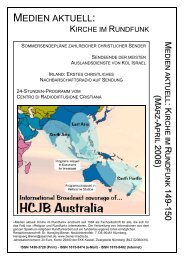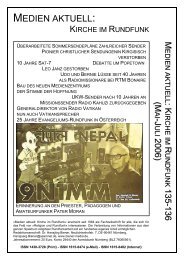Pathfinder Chronicles - Gazetteer - Asamnet
Pathfinder Chronicles - Gazetteer - Asamnet
Pathfinder Chronicles - Gazetteer - Asamnet
You also want an ePaper? Increase the reach of your titles
YUMPU automatically turns print PDFs into web optimized ePapers that Google loves.
<strong>Pathfinder</strong> <strong>Chronicles</strong><br />
12<br />
Class Abilities: Due to the constant spread of civilization<br />
during the Age of Enthronement, many druids took<br />
to the mountains for solace. These druids adapted to the<br />
rocky terrain and have gained the mountain stride ability.<br />
This ability replaces woodland stride.<br />
Mountain Stride (Ex): A druid with this ability can move through<br />
rocky terrain at her normal speed and without taking damage<br />
or suffering any other impairment. Magically manipulated<br />
terrain, such as spike stones, affects her normally.<br />
Fighter<br />
Fighters make up the backbone of most military forces<br />
and militias and account for most mercenaries as well.<br />
Training in the martial arts is common throughout<br />
Golarion, especially considering the recent and current<br />
conf licts. While those of the warrior class are more<br />
common, fighters are in much higher demand, often<br />
chosen to lead or to tackle particularly dangerous foes.<br />
Mercenary companies across Golarion comprised almost<br />
entirely of fighters sell their swords to the highest bidder,<br />
engaging in the deadliest of tasks. In a profession where<br />
scars are a badge of honor, fighters often find their share<br />
of honor and then some.<br />
Appearance: Few other classes vary more in appearance<br />
than fighters. Most wear armor and carry a variety of<br />
weapons, but from there differences abound. Some<br />
wear numerous medals, showing off their conquests or<br />
achievements, while others scorn such adornment in favor<br />
of more intimidating garb, such as draconic helms and<br />
demonic arms. Still others prefer to blend in, wearing<br />
well-worn armor with little decoration. Those of noble<br />
lines or part of an organized force often display some sort<br />
of heraldry on their shield or cloak. Some go so far as to<br />
carry a banner or pennant, to impress those<br />
they meet or otherwise announce<br />
their identity.<br />
Nations: Fighters can hail from any part of Golarion.<br />
While barbarians are a bit more common in the north of<br />
Avistan and the heart of Garund, fighters can still be found<br />
there, practicing with local weapons and armor, honing<br />
their martial skill.<br />
Class Abilities: Numerous martial academies around<br />
the Inner Sea region teach weapon skill, tactics, diplomacy,<br />
and other tools useful for war. Fighters who attend these<br />
schools may choose to take additional class skills. Taking<br />
this option replaces the bonus feat gained upon taking the<br />
first level of fighter.<br />
Class Skills: A fighter trained at a famous war college or<br />
fighting school gains the following class skills (in addition<br />
to the normal fighter class skills): Diplomacy (Cha),<br />
Gather Information (Cha), Knowledge (architecture and<br />
engineering) (Int), Knowledge (geography) (Int), Knowledge<br />
(nobility and royalty) (Int), Sense Motive (Wis).<br />
Skill Points at 1st Level: (4 + Int modifier) x 4.<br />
Skill Points at Each Additional Level: 4 + Int modifier.<br />
Monk<br />
While many seek purity of mind or body, few have the<br />
devotion to walk the path of a monk, making them a rarity<br />
in Golarion. There are relatively few monastic orders in<br />
Avistan and Garund, and even they are small. While some<br />
set out upon the monastic path through independent<br />
study, most monks who learn outside an institution do<br />
so under the tutelage of a lone master. These apprentices<br />
can be found nearly anywhere, performing a host of chores<br />
designed to strengthen their bodies while learning all the<br />
master has to teach to enrich their minds. Most monks pay<br />
homage to Irori, who promises to show them the path to<br />
self-perfection.<br />
Appearance: Monks prefer to dress simply, in<br />
loose-fitting robes or other garments that allow for a<br />
maximum range of movement. Such clothing is usually<br />
Taldan<br />
In the East, Azlanti f leeing the devastation of their homeland mixed with Keleshite<br />
frontiersmen of ancient desert empires. In time, the progeny of these unions formed the<br />
kingdom of Taldor, the oldest surviving Avistani nation bordering the Inner Sea. Taldor<br />
remains but a sliver of its original self, having once spanned much of southern Avistan by<br />
conquering and nearly absorbing the native Chelaxians. Even in remote locales like the<br />
River Kingdoms and Ustalav one can still find families of Taldans remaining from the days<br />
of the ancient empire.<br />
Taldans generally display light brown hair and a bronzed complexion betraying clear<br />
Keleshite inf luence. Men favor short beards with women commonly donning elaborate<br />
wigs festooned with fancy curls and delicate bows. Typical of the decadence that has eroded<br />
Taldor for centuries, a more elaborate wig is a sign of social status, resulting in fierce<br />
competition between rivals. Most Taldans speak Taldane, the tongue of ancient Taldor.



